Recent Water Damage Posts
Combatting the Cold: Navigating Frozen Pipe Bursts with SERVPRO of North Atlanta/Buckhead
1/30/2024 (Permalink)
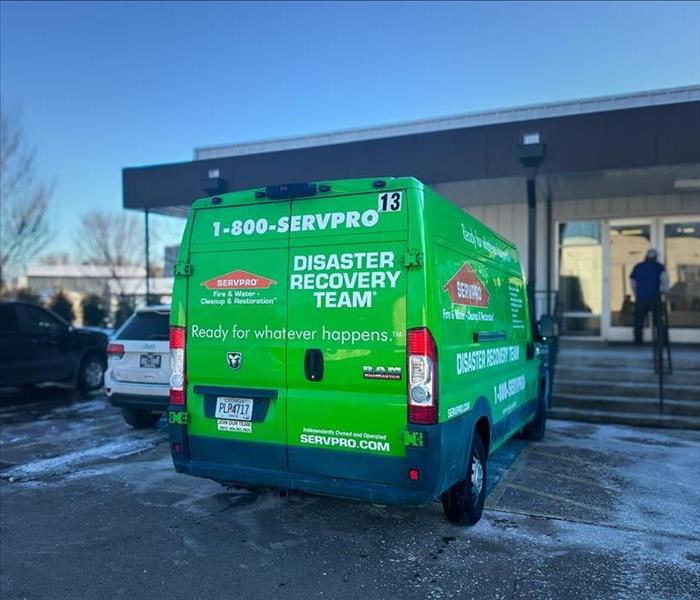 SERVPRO of North Atlanta/Buckhead is here to help for all of your emergency water damage restoration needs.
SERVPRO of North Atlanta/Buckhead is here to help for all of your emergency water damage restoration needs.
Water damage restoration is an essential service for households and businesses, especially during the harsh winter months. At SERVPRO of North Atlanta/Buckhead, we've recently faced an exceptional challenge with a surge in frozen pipe bursts within our service territory, particularly in areas like Buckhead, Sandy Springs, and Brookhaven. This situation arose as temperatures dipped below 25 degrees Fahrenheit, highlighting the critical need for preparedness and effective response to such emergencies. This blog post delves into the intricacies of water damage restoration, focusing specifically on the phenomenon of frozen pipe bursts and their impact on our communities.
The Science Behind Frozen Pipe Bursts
Understanding what causes frozen pipe bursts is crucial to both preventing and dealing with them effectively. When water inside a pipe freezes, it expands, increasing pressure within the pipe. This pressure can cause the pipe to crack or burst, regardless of whether it's made of metal or plastic. The areas most at risk are those where pipes are not properly insulated or are exposed to severe cold, such as outdoor hose bibs, swimming pool supply lines, and water sprinkler lines. Inside the home, pipes running through unheated interior spaces like basements, crawl spaces, attics, garages, or even cabinets can also freeze. The recent incidents in Buckhead, Sandy Springs, and Brookhaven exemplify the widespread impact of such events, affecting numerous properties across these neighborhoods.
Immediate Actions and Restoration Process
Upon discovering a burst pipe, the immediate step is to shut off the main water supply to prevent further damage. Promptly contacting a professional service like SERVPRO of North Atlanta/Buckhead is critical. Our emergency response team is adept at quickly assessing the extent of water damage, employing advanced moisture detection tools to ensure a comprehensive restoration process.
The restoration process involves several key stages, starting with water extraction to remove standing water, followed by drying and dehumidifying the affected areas to prevent mold growth. Cleaning and sanitizing come next, with antimicrobial treatments to disinfect the area. The final step involves repair and restoration work, which can range from minor fixes to major reconstruction efforts, depending on the severity of the damage.
Preventive Measures
Prevention is paramount in avoiding the disruption caused by frozen pipes. We recommend insulating all exposed pipes, especially in areas like Buckhead, Sandy Springs, and Brookhaven, where the recent cold snap has taken a toll. Additionally, sealing gaps around pipes to prevent cold air intrusion and keeping cabinet doors open during cold spells to allow warm air circulation can significantly reduce the risk of freezing.
Why SERVPRO of North Atlanta/Buckhead Stands Out
Choosing SERVPRO of North Atlanta/Buckhead for your water damage restoration needs ensures a swift and efficient response from a team of certified professionals. Our expertise extends across various neighborhoods, including Buckhead, Sandy Springs, and Brookhaven, making us a reliable partner in times of emergency. We are committed to restoring your property to its pre-damage condition, ensuring peace of mind with our 24/7 availability.
In conclusion, the recent episodes of frozen pipe bursts across our service areas underscore the importance of being prepared for winter's challenges. With a deeper understanding of what causes these incidents and how to respond, residents and businesses can better protect their properties. Remember, when facing water damage, SERVPRO of North Atlanta/Buckhead is here to help, ensuring a prompt, professional, and thorough restoration process.
The Dangers of DIY Sewage Cleanup: Why It's Best to Call in the Professionals
5/1/2023 (Permalink)
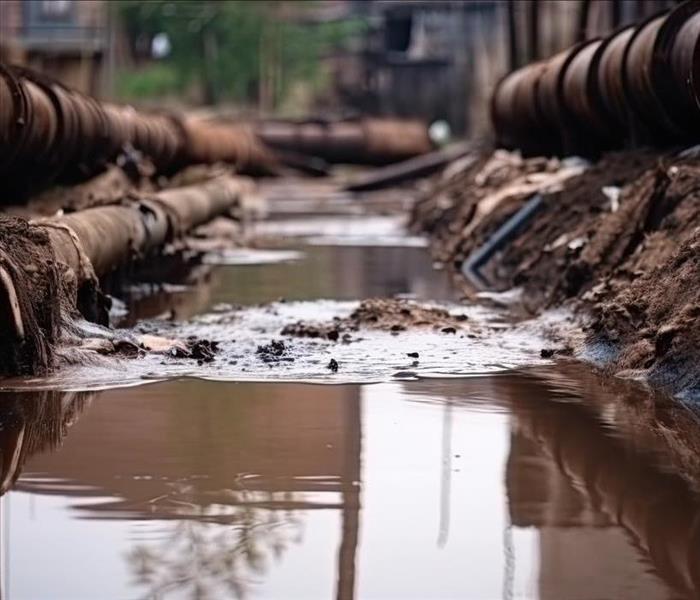 Whether your 1000 sq ft home or 100,000 sq ft commercial building experiences a flood in Atlanta, Buckhead, or nearby areas we're here to help 24/7.
Whether your 1000 sq ft home or 100,000 sq ft commercial building experiences a flood in Atlanta, Buckhead, or nearby areas we're here to help 24/7.
Experiencing a sewage backup in your home or business can be a daunting and overwhelming experience. While it may be tempting to try to tackle the problem yourself to save some money, attempting a DIY sewage cleanup can be hazardous and ultimately, more costly in the long run. In this blog post, we will explore the dangers of attempting to clean up sewage on your own and explain why it's best to call in professionals like SERVPRO of North Atlanta/Buckhead for water damage restoration and sewage cleanup services.
Understanding the Health Risks Associated with DIY Sewage Cleanup
Sewage backups can be both hazardous and potentially deadly when homeowners attempt to address the issue themselves. Sewage can consist of greywater (from utilities like sinks, tubs, showers, and dishwashers) or, even worse, black water, which is the water used to flush toilets mixed with the human waste that it flushes away. Besides human waste, chemical compounds and cleansers in sewage produce phosphorus and nitrogen pollution that can damage waterways and pose serious risks when entering your home. Sewage backups in your home can result from various causes, such as clogs in the home's drain pipes, tree roots, damaged sewer lines, and more.
Sewage contains up to one million microorganisms per millimeter of waste, some of which are vital for breaking down solid waste. However, pathogenic bacteria are also present and can cause health problems such as Hepatitis A and Encephalitis. Due to its ability to seep into porous materials, sewage is challenging to clean up by hand.
Furthermore, sewage contains parasitic microorganisms, such as polio, adenovirus, and enteric cytopathic human orphan (ECHO) viruses, which can cause severe health issues in humans. While the ratio of viruses to bacteria is relatively small, they are still harmful to your health. Wastewater also hosts pathogenic and saprophytic bacteria, including E. coli, Giardia Lamblia, Salmonella, and Pseudomonas aeruginosa. Direct exposure to these toxins can lead to intestinal diseases, typhoid fever, cholera, and dysentery. That is why coming into contact with sewage without wearing personal protective equipment (PPE) and following proper procedures can pose a severe threat to your health.
Mold growth is another significant risk when attempting DIY sewage cleanup. Mold exposure can worsen allergy and asthma symptoms, especially in children and individuals with compromised immune systems. Flooding provides ideal conditions for mold to develop, as it only needs moisture, organic material, and optimal temperature. Alarmingly, mold can grow within just 24 to 48 hours of the incident.
However, the greatest danger is sometimes not the risk of disease, but the risk of electrocution or explosion. Never enter a flooded area or light matches until the utility companies have shut off the electric and gas service. If you detect or smell gas, immediately evacuate your home and notify the gas company. You should also enter your home with caution if you did not turn off the main power switch before the flooding occurred. Touching electrical lines, wires, equipment, and fixtures during and after a flood can be dangerous.
Addressing the underlying plumbing issue is crucial to prevent future sewage backups. Failing to fix the problem correctly can lead to recurring spills and increased costs. It's worth noting that most home insurance policies cover sewage cleanup, so hiring professionals like SERVPRO of North Atlanta/Buckhead is a practical and cost-effective solution.
The Importance of Proper Protective Gear and Equipment in Sewage Cleanup
Handling human waste or sewage comes with an increased risk of illness from waterborne diseases. Anyone involved in sewage cleanup must follow proper hygiene practices and wear appropriate personal protective equipment (PPE) to minimize the risk of contracting diseases such as the ones mentioned earlier in this article. SERVPRO restoration technicians are trained to prioritize health and safety while dealing with sewage cleanup tasks.
Basic Hygiene Practices for Restoration Technicians
- Always wash hands with soap and water after handling human waste or sewage, before eating or drinking, and before and after using the toilet.
- Avoid touching your face, mouth, eyes, nose, or open sores and cuts while handling human waste or sewage.
- Keep open sores, cuts, and wounds covered with clean, dry bandages.
- Use waterproof gloves to prevent cuts and contact with human waste or sewage.
- Wear rubber boots at the worksite and during transport of human waste or sewage.
- Refrain from smoking or chewing tobacco or gum while handling human waste or sewage.
- Gently flush eyes with safe water if human waste or sewage contacts them.
Restoration techs who handle human waste or sewage are always provided with proper PPE, training on how to use it, and handwashing facilities. The following PPE is typically required for restoration technicians handling human waste or sewage:
- Goggles: to protect eyes from splashes of human waste or sewage.
- Protective face mask or splash-proof face shield: to protect nose and mouth from splashes of human waste or sewage.
- Liquid-repellent coveralls: to keep human waste or sewage off clothing.
- Waterproof gloves: to prevent exposure to human waste or sewage.
- Rubber boots: to prevent exposure to human waste or sewage.
To further protect restoration technicians from exposure, employees are typically required to have their Tetanus vaccinations up to date, and in most cases polio, typhoid fever, Hepatitis A, and Hepatitis B vaccinations as well. Adhering to these best practices and procedures ensures the health and safety of workers handling sewage cleanup tasks. That is also why sewage cleanup and related water damage restoration can become more expensive and dangerous for a DIY restorer.
The Role of Industry Standards and Certification in Professional Sewage Cleanup Services
Professional water damage restoration and sewage cleanup companies like SERVPRO of North Atlanta/Buckhead adhere to strict industry standards and guidelines to ensure that their work is effective, safe, and compliant with local regulations. Many restoration companies hold certifications from organizations like the Institute of Inspection, Cleaning and Restoration Certification (IICRC), which sets forth best practices for handling sewage cleanup projects.
The IICRC establishes and promotes globally recognized standards, including the IICRC S500 and IICRC S520, for water damage restoration and mold remediation, respectively. The IICRC S500 focuses on principles of water damage restoration, safety, and health, while the IICRC S520 covers mold remediation and abatement procedures. These standards provide a comprehensive framework for professionals to follow when dealing with sewage cleanup and water damage restoration projects.
By hiring a certified professional, you can be confident that your property will be cleaned and restored according to the highest standards of quality and safety. Certified professionals undergo rigorous training and examinations to demonstrate their competence in adhering to industry standards. Additionally, many professional sewage cleanup companies maintain affiliations with other relevant industry organizations, such as the Restoration Industry Association (RIA) and the Indoor Air Quality Association (IAQA), further ensuring their commitment to upholding best practices.
When you choose a professional sewage cleanup service with IICRC certification and affiliations to relevant industry organizations, you can trust that your property will be restored with the utmost care, professionalism, and adherence to industry guidelines. This not only guarantees the safety and health of those using the property but also provides peace of mind that the cleanup process will be completed with the highest level of expertise. This total peace of mind can be lacking in a DIY sewage cleanup project.
Finding the Right Sewage Cleanup Company: Questions to Ask and Factors to Consider
When looking for a professional sewage cleanup company, it's essential to do your research and ask the right questions. Some factors to consider include:
- Experience and expertise: Look for a company that specializes in water damage restoration and sewage cleanup, with a track record of successful projects.
- Certification and training: Make sure the technicians are trained and certified by reputable industry organizations like the IICRC.
- Insurance and liability coverage: Verify that the company has proper insurance coverage to protect you from potential liability.
- Availability and response time: Choose a company that offers 24/7 emergency services and can respond quickly to your needs.
Attempting a DIY sewage cleanup can be dangerous and may result in long-term damage to your property and health risks for you and your family. Instead, trust the professionals at SERVPRO of North Atlanta/Buckhead for comprehensive water damage restoration and sewage cleanup services. Our certified technicians have the experience, equipment, and expertise to ensure that your home or business is thoroughly cleaned, sanitized, and restored to its pre-damage condition.
By choosing a professional sewage cleanup company like SERVPRO of North Atlanta/Buckhead, you can have peace of mind knowing that your property is in the hands of experienced and certified experts who are committed to delivering the highest quality service.
Don't put your health and property at risk by attempting a DIY sewage cleanup. Call SERVPRO of North Atlanta/Buckhead today at (404) 261-2925 for more information on our water damage restoration and sewage cleanup services. Let our team of restoration professionals help make it "Like it never even happened."
The Role of Dehumidifiers in Water Damage Restoration
2/16/2023 (Permalink)
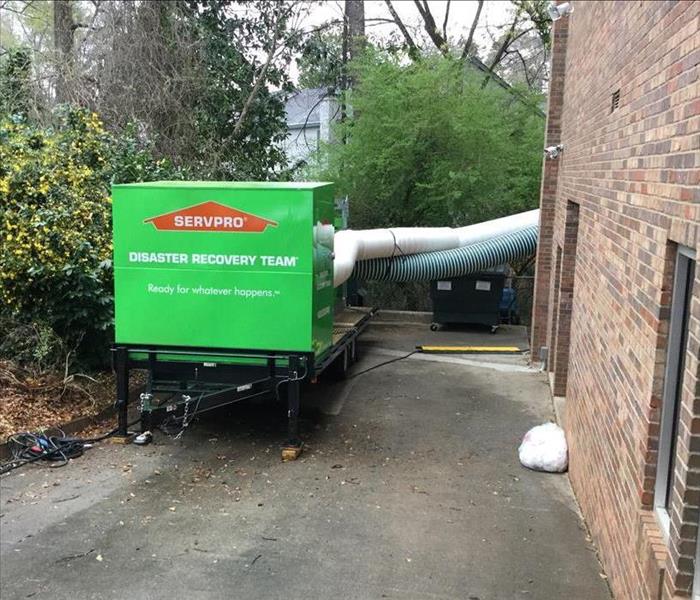 SERVPRO Trailer Mount Dehumidifier at a water damage restoration project in Buckhead, GA
SERVPRO Trailer Mount Dehumidifier at a water damage restoration project in Buckhead, GA
Water damage can be a nightmare for any homeowner or business owner. It can cause extensive damage to the property, and the restoration process can be time-consuming and expensive. However, with the right equipment, such as dehumidifiers, the process can be made much easier and more effective.
What is Water Damage Restoration?
Water damage restoration is the process of restoring a property to its preloss condition after it has been damaged by water. The process involves several steps, including water extraction, drying, and dehumidification. The goal of water damage restoration is to prevent further damage and to restore the property to its preloss condition.
The Role of Dehumidifiers in Water Damage Restoration:
Dehumidifiers are an essential tool in the water damage restoration process. They help to remove excess moisture from the air and prevent the growth of mold and mildew. Dehumidifiers work by pulling in moist air and removing the moisture from it, then blowing out dry air. They can be used in conjunction with air movers and fans to speed up the drying process.
Benefits of Using Dehumidifiers:
Using dehumidifiers in the water damage restoration process has several benefits. Firstly, they help to prevent the growth of mold and mildew, which can cause health problems for occupants of the property. They also help to prevent further damage to the property by removing excess moisture from the air. In addition, dehumidifiers can help to reduce the drying time, which can save time and money in the restoration process.
What are Some Types of Dehumidifiers Used in Water Damage Restoration?
There are several types of dehumidifiers used in property damage restoration. Some common types include:
Refrigerant Dehumidifiers: These dehumidifiers work by cooling the air and removing moisture from it, similar to how an air conditioner works. They are commonly used for residential and commercial applications.
Desiccant Dehumidifiers: These dehumidifiers use a desiccant material, such as silica gel or activated alumina, to absorb moisture from the air. They are commonly used in industrial and commercial settings.
Low Grain Refrigerant (LGR) Dehumidifiers: These dehumidifiers are similar to refrigerant dehumidifiers, but they are designed to handle lower moisture levels and can be more effective at removing moisture from the air.
Ventilation Dehumidifiers: These dehumidifiers work by exchanging moist air for drier air from outside. They are commonly used in areas where there is a lot of outdoor air available, such as in crawl spaces.
The type of dehumidifier used will depend on the specific conditions of the water damage restoration project, such as the size of the affected area, the severity of the damage, and the type of materials affected. That is why our SERVPRO restoration technicians are trained to calculate and install the right type and number of dehumidifiers needed for each specific project.
What is the ideal air moisture level to prevent mold growth or bacterial growth?
The ideal air moisture level in a home to prevent mold growth or bacterial growth is between 30% to 50% relative humidity (RH). High levels of humidity, above 60% RH, can promote the growth of mold, bacteria, and other microorganisms, while low levels of humidity, below 30% RH, can cause dryness and discomfort for occupants. Maintaining the humidity level within the ideal range can help prevent the growth of mold and bacteria, while also providing a comfortable living environment. Using a hygrometer, a tool for measuring humidity, can help homeowners monitor and maintain the ideal humidity level in their homes.
What is the average moisture level difference between the input of air and output of air of a dehumidifier during a water damage restoration project?
The average moisture level difference between the input of air and output of air of a dehumidifier during a water damage restoration project can vary depending on several factors such as the size of the area, the severity of the water damage, and the type of dehumidifier used.
However, as a general guideline, a typical dehumidifier can remove 10-20 pints of water per day from a 500-1000 square feet area. This means that the moisture level difference between the input and output of air of a dehumidifier can be around 10-20 pints of water per day, or around 5-10 liters of water per day.
It is important to note that the actual moisture level difference can vary depending on the specific conditions of the water damage restoration project, and it is best to consult with a professional water damage restoration company like SERVPRO of North Atlanta/Buckhead to determine the appropriate type and number of dehumidifiers needed for the specific project.
Conclusion:
Dehumidifiers play a crucial role in the water damage restoration process. They help to remove excess moisture from the air, prevent the growth of mold and mildew, and reduce the drying time. If you need water damage restoration services, make sure that the company you choose has the necessary equipment, including dehumidifiers, to ensure a quick and effective restoration.
Thankfully, our SERVPRO team has the right equipment for any type of project. So whether your single-family home or multi-story commercial building experiences water damage, our SERVPRO team has the expertise and equipment to get your business restored quickly like it never even happened.
Call us at (404) 261-2925 for 24/7/365 support. We’re always here to help.
Tips to Prevent Frozen Water Pipes in Your Home
1/2/2023 (Permalink)
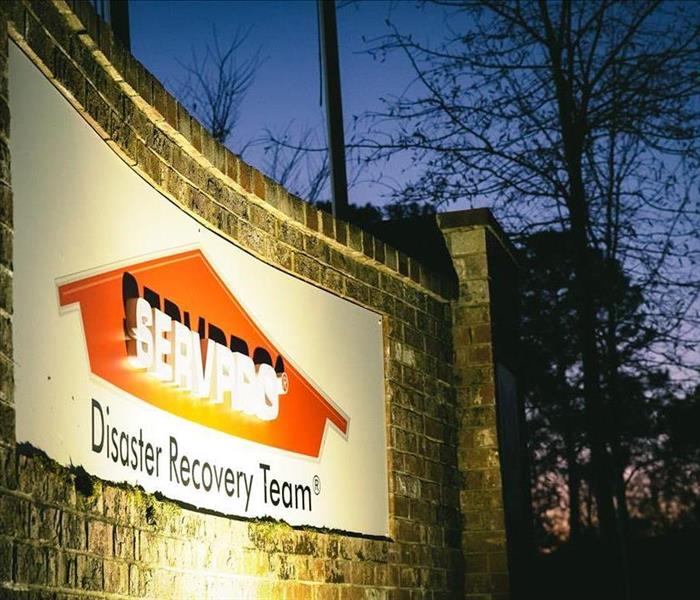 SERVPRO Team Bisig is here to help if you experience any kind of water damage from frozen pipes in your home or business in or near Atlanta, Georgia.
SERVPRO Team Bisig is here to help if you experience any kind of water damage from frozen pipes in your home or business in or near Atlanta, Georgia.
As the winter season approaches, it's important to be proactive in preventing frozen water pipes in your home. Frozen pipes not only disrupt your water supply, but they can also lead to costly water damage and the need for water damage restoration services.
Here are some tips for preventing frozen pipes in your home:
Insulate your pipes: Exposed pipes are more likely to freeze, so be sure to insulate any pipes that are located in unheated areas of your home, such as the attic, basement, or garage. You can use pipe insulation sleeves, heat tape, or foam pipe insulation to protect your pipes.
Keep your thermostat set to the same temperature day and night: By keeping your thermostat at a consistent temperature, you can help prevent your pipes from freezing.
Allow a slow trickle of water to flow: When the temperature dips below freezing, allow a slow trickle of water to flow from your faucets. This can help prevent your pipes from freezing and bursting.
Keep your garage door closed: If you have pipes in your garage, be sure to keep the garage door closed to keep the area warm.
Disconnect your garden hoses: Before the winter season arrives, be sure to disconnect your garden hoses and store them in a safe place. If water is left in the hose, it can freeze and cause your outdoor faucets to burst.
Seal any drafts: Check for drafts around your windows and doors and seal any gaps to keep the cold air out.
By following these prevention tips, you can help protect your home from the costly damage caused by frozen pipes. However, if you do experience a pipe burst, it's important to quickly address the issue and call a professional water damage restoration company to properly assess the damage and restore your home. Don't hesitate to contact a water damage restoration company if you suspect that your pipes have burst or if you notice any signs of water damage in your home.
In conclusion, taking steps to prevent frozen pipes in your home is essential to avoiding the need for water damage restoration services. By insulating your pipes, keeping your thermostat consistent, allowing a slow trickle of water to flow, closing your garage door, disconnecting your garden hoses, and sealing any drafts, you can help protect your home from the costly damage caused by frozen pipes.
3 Easy Home Maintenance Tips to Help You Prevent a Water Damage Event: SERVPRO of North Atlanta / Buckhead
3/10/2022 (Permalink)
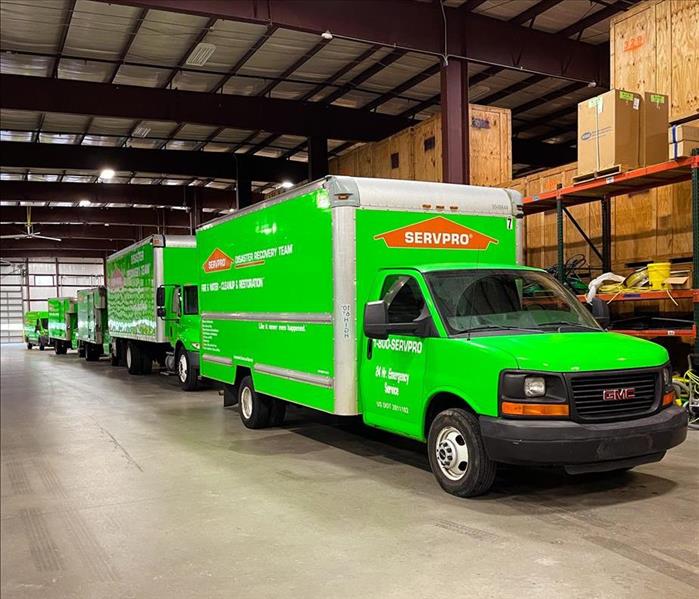 SERVPRO of North Atlanta / Buckhead keeps its trucks ready to respond immediately to your water damage emergency.
SERVPRO of North Atlanta / Buckhead keeps its trucks ready to respond immediately to your water damage emergency.
Water damage can be a costly and devastating event. At SERVPRO of North Atlanta / Buckhead, we have often found that careful maintenance can diminish the risk and costs of water damage restoration. The water damage restoration process can be stressful, but by following some simple home maintenance tips, you can help prevent flooding from structural or maintenance issues in your home.
1) Assess your water heater to minimize water repair risk.
Water heater issues are common when it comes to our emergency water cleanup calls in Buckhead, GA and Peachtree Hills, GA. With regular maintenance, you can prevent a surprise water heater flood in your home. Make sure the water heater's thermostat is regulating the temperature properly to prevent pressure buildup that can cause a water leak.
If you notice an odd taste or odor in the water from your water heater, it may have rust or sediment buildup inside. Also, if your water starts to make strange noises, it could need inspection or replacement to prevent a surprise flood.
2) Inspect your appliance hoses and connectors for leaks and replace them if they start showing wear.
Look for any cracks, kinks, unraveling, wear, or corrosion on the hoses and connectors. If you find any damage, replace them immediately. Most manufacturers and plumbers also recommend replacing water hoses and connectors every 3-5 years to prevent surprise water damage issues.
3) Replace old caulking in your windows and doors to prevent wet areas and moisture around the windows.
We often get calls for mitigation work in Atlanta, GA and Sandy Springs, GA for this kind of mitigation work. Caulking your windows can not only stop water leaks but also help to keep out drafts. It is a simple process that you can do yourself. Most window caulks should last about five years, but you should inspect your caulking every year and replace it if you notice any cracks developing or if you see it pulling away from the window.
You should also check your exterior door flashings for holes or rust that can allow water entry. If your doors are properly caulked, you can also help prevent premature flashing failure.
We are Here to Help for All of Your Water Repair Needs
If you or someone you know needs water damage restoration service, our team at SERVPRO of North Atlanta / Buckhead is Here to Help!
Save our number for the future or call today for rapid response from our IICRC trained water restoration technicians.
Call today! (404) 261-2925
3 Steps to Take After a Pipe Break
2/7/2022 (Permalink)
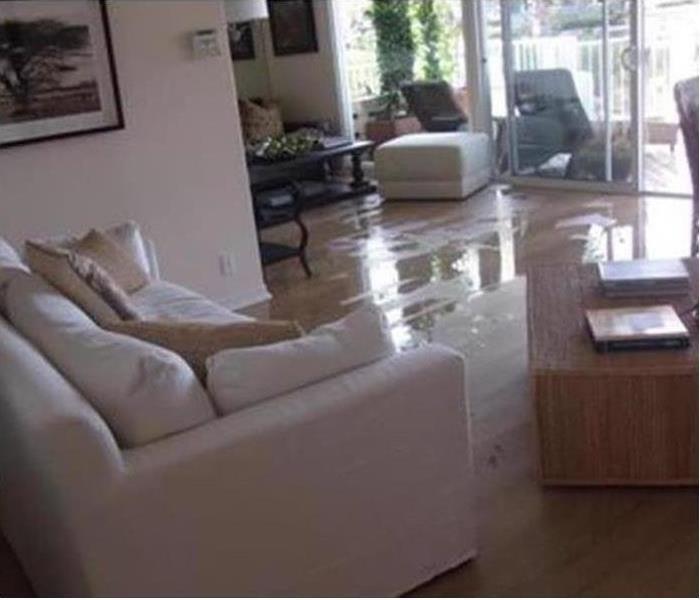 Water damage due to a bursting pipe in Lenox Square, GA.
Water damage due to a bursting pipe in Lenox Square, GA.
After a Pipe Break, Follow These 3 Steps
Many homeowners in Lenox Square, GA worry about a flash flood when the weather outside gets a little too wet. However, one commonly overlooked source of flooding is bursting pipes. A homeowner should contact a professional to fix a broken pipe immediately. It is the only way to curtail the level of water damage from getting any worse.
1. Stop the Flow of Water
The first thing you as a homeowner can do is prevent the flooding from getting any worse. You will need to shut off the main water line. After you do so, you still need to drain the pipes of all water. This will require you to run every sink and flush each toilet in your house at least once. You will also need to turn off your home’s water heater. Once there is no running tap water left, the leak should stop entirely.
2. Inspect the Damage
Next, you will need to locate the burst pipes. If you are able to find the broken pipe, then you should take pictures of the damage for insurance purposes. If you cannot find the culprit, then you will need to bring in a professional crew as soon as possible.
3. Contact a Professional Drying and Remediation Crew
For homeowners in Lenox Square, GA who think they are fairly handy around the house, it is always a good idea to call a professional team to take care of any water damage just to be safe. There is a lot of remediation that needs to take place, such as drying any damaged structures and preventing mold growth. Professionals also know how to safely work around water to prevent electrocution or illness.
It only takes a matter of minutes for bursting pipes to wreak havoc on your home. The faster you can respond to such an emergency, the better off you and your family are sure to be.
The Three Categories of Water Damage
1/21/2022 (Permalink)
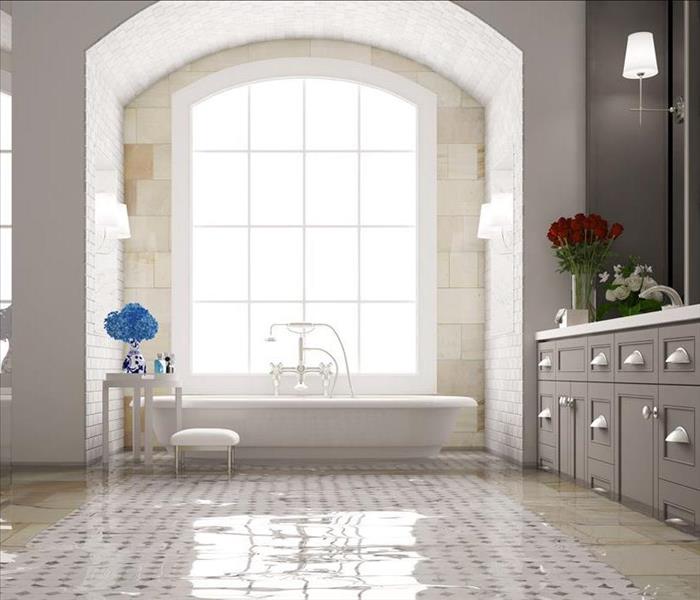 A bathtub overflowing is considered category 1.
A bathtub overflowing is considered category 1.
The Three Categories of Water Damage
Dealing with flooding in your home in Peachtree Battle, GA, can be one of the most difficult things imaginable. The first step involved in remediating the issue is learning what the three categories of water damage are. It is important to know what stage you are dealing with and the proper way to handle it, particularly if there is contaminated water. Here are the three categories.
1. Category 1. The first category of water damage is the least severe and the simplest to handle. It is caused by clean water that usually starts from a supply line that has broken, or from a bathtub or sink overflowing. This water is not contaminated. Category 1 can advance into category 2 and 3 if it is not promptly taken care of.
2. Category 2. The second category of water damage, frequently caused by what is referred to as grey water, is the result of contaminated water that can be harmful if you are exposed to it or it is swallowed. Some sources are a leaking dishwasher or a toilet with urine that overflows. There may also be microorganisms present.
3. Category 3. The third category of water damage, is the most severe. This water is extremely contaminated and unsanitary. Common sources are from flooding bodies of water, sewage or standing water that has been stagnant for long periods of time. This type of water is usually full of viruses, bacteria and parasites. You will need emergency water damage repair services as soon as possible.
Discovering flooding in your home can be overwhelming, especially if there is contaminated water. Understanding what the categories of water damage are is the first step to getting your home clean and returning it to a safe condition.
What To Do When a Sewage Backup Happens at Home
12/28/2021 (Permalink)
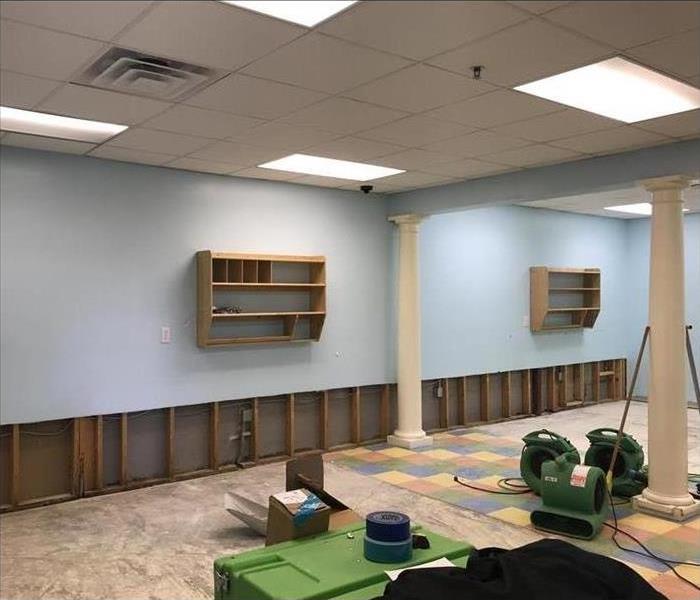 Disinfecting and drying are essential to restoring safe living conditions.
Disinfecting and drying are essential to restoring safe living conditions.
Steps For Managing Sewer Damage
There are certain things homeowners in Ridgeview Park, GA, fear, and one of the most formidable is dealing with a sewer backup. What homeowners may not realize is that sewer issues can mean more than just the inconvenience of a flooded toilet or an unusable kitchen sink. The presence of potentially contaminated water within your home poses a serious health threat. Sewer cleanup should always be handled carefully and swiftly. Here are three steps for managing sewer damage.
1. Treat Sewer Problems As an Emergency
Coming into contact with any form of sewage can be dangerous, and you should assume that all water is contaminated, even if it appears clean. In the event that sewage enters your living space, time is of the essence. It is important to begin the sewer cleanup process immediately.
2. Disinfect and Dry
Disinfecting and drying are essential to restoring safe living conditions. Begin by getting rid of all solid and liquid waste. Be sure to remove and clean any wet carpeting or fabric. Afterward, sanitize and dry the affected area. Experts can help provide a more thorough cleaning by using advanced technology to detect water that may not be readily visible.
3. Repair Any Damage
Once the space is clean and dry, replace any damaged materials such as flooring or wallboard. Always repair saturated or decaying building materials after a flooding incident in order to avoid mold or other contaminants.
Dealing with water damage is never fun, but if attended to promptly, sewer cleanup can be done safely and effectively. When a sewage disaster strikes, it is crucial not to delay. Whether it is the middle of the night or a holiday morning, water damage restoration specialists are available 24/7, year-round to help you restore the cleanliness and comfort of your home.
How Do I Create a Business Continuity Plan?
11/29/2021 (Permalink)
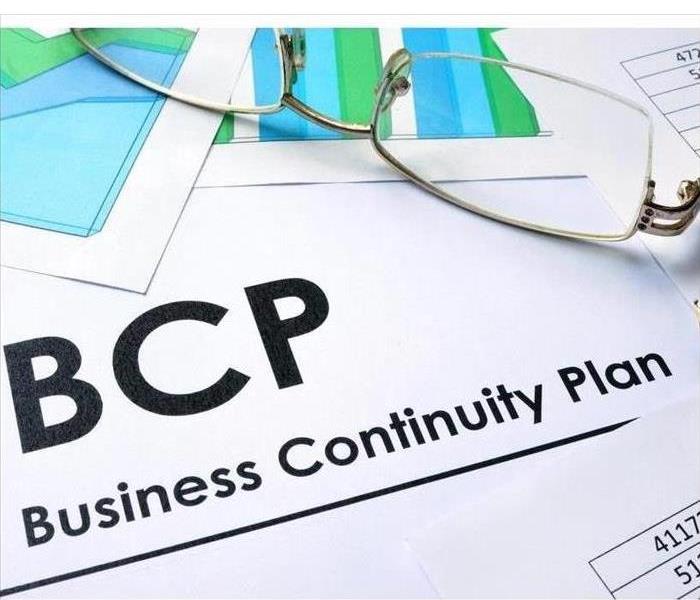 A business continuity plan helps you protect your employees and assets during a stressful time.
A business continuity plan helps you protect your employees and assets during a stressful time.
Planning for an emergency saves time and money. Having insurance to help cover expenses after a disaster is one step. Putting together a business continuity plan gives you an outline to follow to keep your business moving forward.
What You’ll Need
An emergency response plan for your business includes thinking about managing assets such as the following during a disaster:
- Employees
- Buildings, equipment, and furniture
- Computers, printers, phones, and other technology
- Inventory (raw materials, finished product, paper goods)
- Important paperwork and records
- Information about utilities, including phone numbers and account information
Ready.gov has tools to help you create a business continuity plan. You also may want to include your insurance policy number and the contact information for a disaster recovery company in Vinings, GA, in your worksheets.
How To Plan
Create a business impact analysis. Identify how your business would be affected by an emergency. Think about decreases in sales and income, increases in expenses, and loss of customers. You’ll get a better picture of which important processes need to keep going no matter what.
Since so many businesses depend on computers, it’s vital to plan for your business to be able to run offline. You’ll want to access your servers and software, so think about how you’ll recover information if you can’t reach your network.
Consider what will happen if you need to move your business or have your employees telecommute. If you’re in manufacturing, think about having access to equipment in a different location. Some companies make agreements with other organizations so they can support each other during a disaster.
Finally, put together a team to guide the emergency response plan during a disaster. Train your team on any procedures and have them practice to see if there are any issues with your strategy.
Catastrophes can strike at any moment. A business continuity plan helps you protect your employees and assets during a stressful time.
Tips for Preventing Pipes from Freezing & Cracking This Winter
11/5/2021 (Permalink)
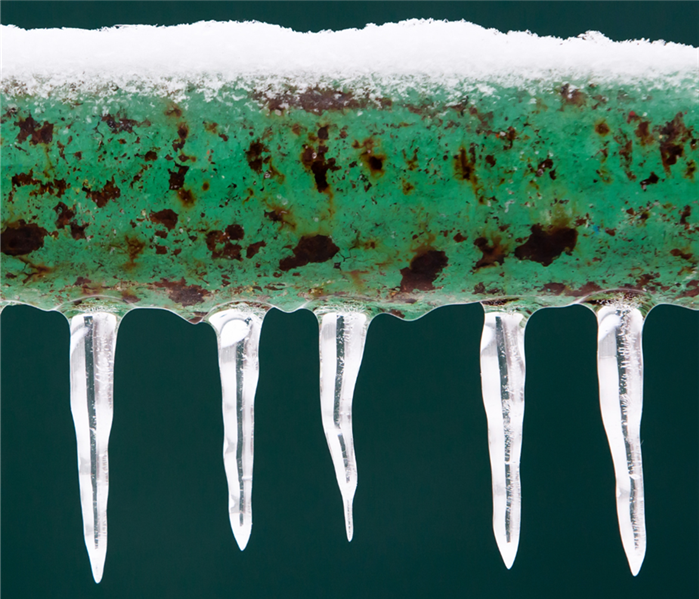 Frozen Water Pipe in the Winter
Frozen Water Pipe in the Winter
When temperatures drop into the 20s, water can freeze inside your home’s pipes. If that happens, your pipes can burst, causing flooding and water damage to your home when they defrost. Take these steps to prevent this from happening to you during the colder months of the year.
Why Do Freezing Pipes Burst?
First of all, it's important to understand why freezing causes pipes to burst in the first place. Because water expands when temperatures drop below 32 degrees, ice crystals begin to form inside your water lines. As the water pressure increases, if these ice crystals grow big enough (which happens over time as the weather grows colder), they can make your pipes expand. This puts pressure on water pipes which eventually -- if left untreated long enough -- causes ruptures.
Freezing Pipes Prevention
The first rule of thumb to prevent freezing pipes is to understand at what temperature they can begin to freeze. According to research by the Building Research Council at the University of Illinois, uninsulated water pipes begin freezing when the temperatures outside drop to 20 degrees or below.
If possible, the best way to prevent freezing is to turn up the heat with a space heater or on your thermostat. However, if you can't raise the temperature artificially, then be sure that any exposed pipes are well-insulated. You can insulate your pipes by wrapping them in foam pipe insulation, which is available at most hardware stores.
Consider leaving all interior doors open and cabinets slightly open to make sure the warm inside air can regulate the temperatures inside properly. If any pipes are in the walls, this method helps protect them from freezing.
If you'll be traveling, but you're concerned about freezing pipes, be sure to leave your faucets slightly dripping. This water flow helps prevent the buildup of ice crystals in your water pipes. However, if you'll be gone for long periods of time, it's a good idea to shut off your water completely.
Are Frozen Pipes Covered by Insurance?
Most homeowner and commercial property insurance policies, in general, will cover damage from a frozen pipe that bursts. Coverage usually exists if the policy contains the following or similar language: Coverage is provided when it is determined damage resulted from a “sudden and accidental” discharge from a plumbing source or system (please check your policy or ask your insurance provider for the exact language).
However, your insurance policy may not respond if you did not take the proper precautions on your property first. Follow the tips in this article, and discuss coverage with your insurance provider to protect your home.
And, in case your home's water pipes do burst this winter, SERVPRO of North Atlanta/Buckhead has the team and experience to quickly make your home "Like it never even happened."
Call us today at (404) 261-2925 for immediate assistance 24/7/365.
How To Safely Recover From a Basement Flood
10/13/2021 (Permalink)
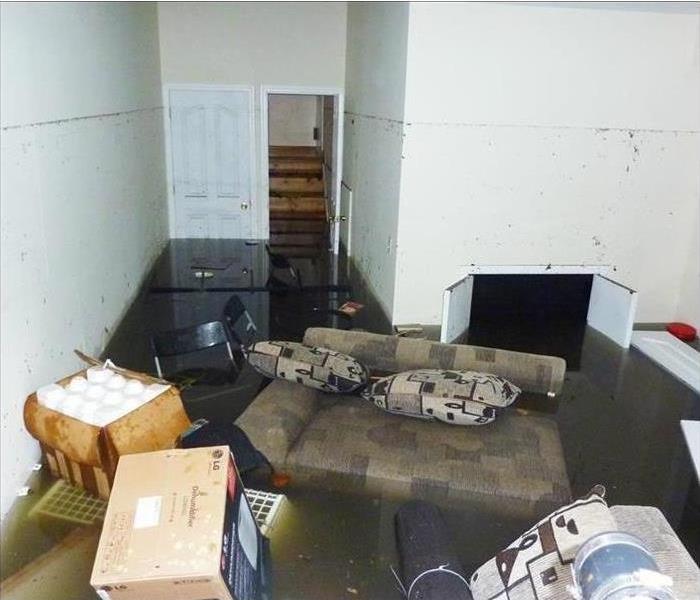 A basement flood can lead to a tremendous amount of property damage.
A basement flood can lead to a tremendous amount of property damage.
How To Safely Recover From a Basement Flood
A basement flood can lead to a tremendous amount of property damage. The quicker you act when a flood occurs, the better off you may be with your recovery. For significant water disasters, call one of several water mitigation companies in Ridgeview Park, GA, for help. If the flood is minor, you can do the cleanup yourself by following three steps.
Remove water
Discard appliances
Implement preventatives
Remove Water
When dealing with a flooded basement, the first step is to remove the water. However, it may not be so simple. First, if a broken water fixture causes the flood, you need to shut off the water supply but consider safety. If flood levels reach a depth of greater than one inch, turn off the electricity to the affected area to minimize the risk of injury. Use shop vacs and pumps to remove the excess water.
Discard Appliances
For deep floods, discard contaminated appliances. All matters of bacteria can call a basement flood home. Removing water from the area will not automatically eliminate all contaminants. Devices may also suffer from electrical issues because of the water damage sustained during a flood. You are better off buying new appliances, and, depending on the circumstances of the flood, your insurance coverage may supply enough funds to replace equipment.
Implement Preventatives
After resolving the original water or plumbing problems, implement preventative measures, ensuring a dry basement. Install sump pumps, backwater valves, and other equipment to prevent groundwater and external floods from penetrating the interior of your home.
A basement flood can lead to significant expenses if not dealt with quickly. For minor floods, a DIY approach may work, but for substantial damage, contact professionals to safely mitigate and restore your property. Deep floods, even higher than a few inches, can lead to life-threatening conditions. Do not risk yourself or your loved ones when there are safer options available.
Step by Step Guide to Managing a Toilet Overflow
6/25/2021 (Permalink)
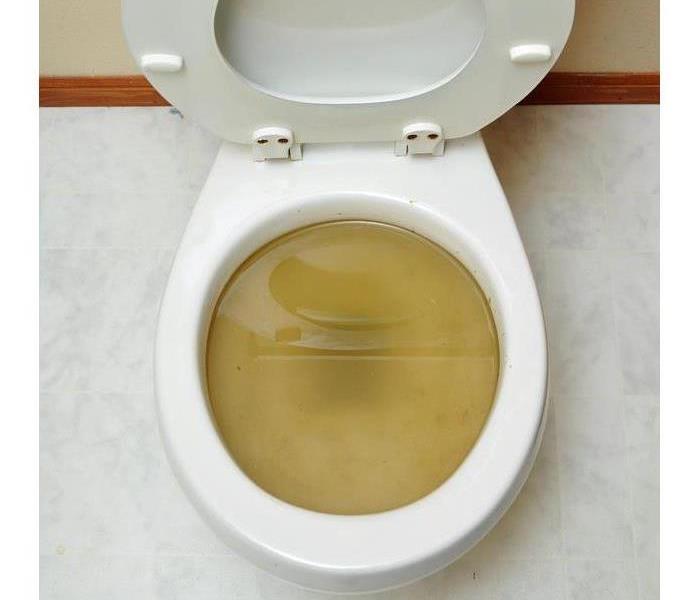 Fix your toilet.
Fix your toilet.
Managing A Toilet Overflow
As a homeowner, there are a few plumbing issues you can expect to crop up. Clogged pipes, leaky faucets and overflowing toilets are all common enough problems that you shouldn't be too surprised if they happen to you. The toilet overflow presents a unique challenge for Vinings, GA, homeowners because it introduces the possibility of sewer damage. If your toilet starts running over, consider following these basic steps.
1. Stop the water. Your first mission should be to end the deluge of water. Most toilets have a shut-off valve at the base. Check to see if your fixture has one. If not, you can stop the water by manually manipulating the float. If all else fails, you can turn off your home's water until the flooded toilet has been taken care of.
2. Get some help. Once the initial onslaught of water has been stopped, you need to call in a water restoration expert to help you assess the damage. This professional can help you figure out why the toilet started to overflow. The team may also create a sewer damage cleanup plan to help you get your bathroom back to normal.
3. Remove the water. Leaving standing water in any part of your home is unwise. The water damage team will likely remove the water as soon as they can. This helps reduce the secondary damage, such as mold growth and material contamination, that can happen as a result of a flooded toilet.
4. Fix the toilet. Chances are your toilet overflowed for a reason. The most common reason is a clog. Work closely with a plumber to remove the blockage from the pipes. If this does not seem to be the issue, you can call the sewage company to figure out what's going on with your system.
The sooner you can address sewer damage the better it is for your home. This type of dirty water can lead to mold growth in as little as 24 to 48 hours.
What Can Cause Secondary Damage After a Flood?
3/9/2021 (Permalink)
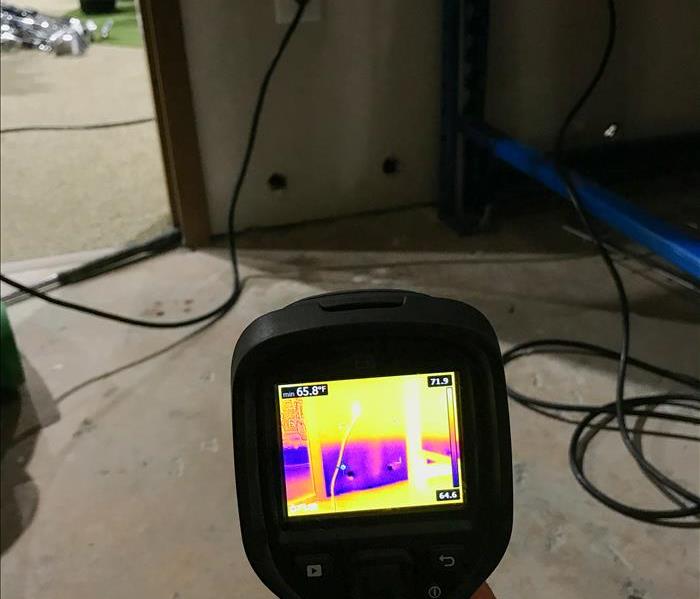 Water damages can lead to mold problems
Water damages can lead to mold problems
A flood, fire or any disaster that involves the quick spread of large amounts of water can quickly lead to further damage from black mold formation at your home in Atlanta, GA.
What Is Secondary Damage?
This type of damage begins to take hold soon after the threat of the original disaster is under control. It is often due to:
- Improper sanitization measures
- Delay in drying efforts
- Insufficient repairs
- Poor ventilation
Mold is among the most prevalent causes of damage in the aftermath of a flood. It can quickly form and spread in various circumstances, such as after using a fire hose to extinguish flames, when plumbing pipes freeze and break or when water enters a home through cracks or a faulty foundation during a severe storm.
What Is the Best Way To Prevent Black Mold After a Flood?
The most reliable way to avoid mold following a flood is to dry out your space immediately. When dealing with large volumes of water, it is best to contact a professional disaster restoration service to apply urgent and rigorous mold prevention measures. Flood recovery teams can use industrial-strength water extraction machines to reduce high humidity quickly and efficiently remove excess water before it leads to mold.
What Are Some Ways To Manage Mold After It Starts To Form?
If mold has already taken hold, professional restoration services can undertake mold remediation to prevent it from spreading. For example, air filtration and ozone treatments can remove hazardous mold spores and their musty odors from the air. When water saturates walls or ceilings, removing and replacing mold-infested drywall can prevent more severe structural problems. Immediate action can mitigate damage after a flood and may raise the chances for a successful insurance claim to defray post-flood expenses.
Secondary damage from black mold formation is avoidable if you take immediate steps to control high humidity and dry your space after a flood. When in doubt, contact a professional flood restoration service for sound advice.
What To Do When Floodwater Gets in the Furnace
2/11/2021 (Permalink)
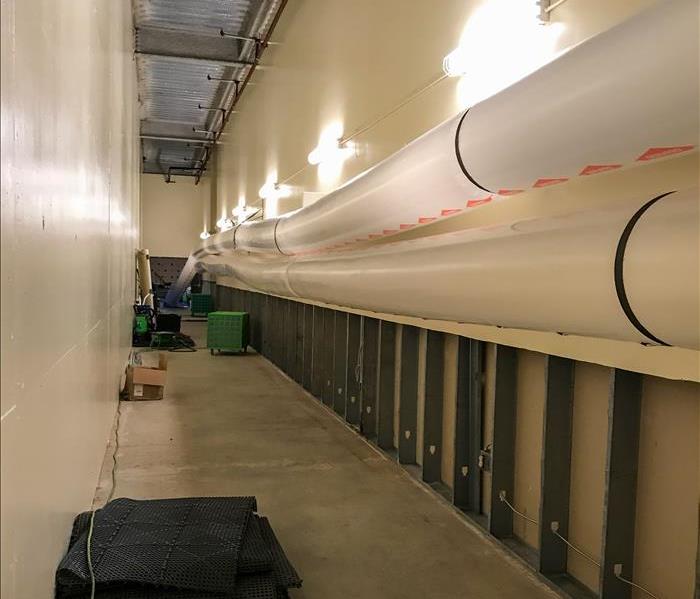 Dealing with flood water.
Dealing with flood water.
When floodwater gets into the furnace of your Atlanta, GA property, everything the water touched must be cleaned and restored, so you can avoid further damage. One area of damage that can be easily overlooked is a furnace flood. When the flooded furnace and any affected HVAC ducts aren't professionally restored, the secondary damage could be even more of a problem than the original flooding.
Act Quickly To Avoid Further Damage
There are several steps you should take as soon as you notice water, whether it's a furnace flood or a burst pipe:
Shut off the water to your building from the main stopcock. This prevents more water from spreading throughout your building. It also reduces the risk of water and electricity combining.
Turn off the electricity. Even if a small amount of water can cause serious electrical trouble.
Move items away from the water. You may have large pieces of furniture that you can safely move to a dry location. Don't move electrical appliances; leave these items to the professionals.
Remove as much water as possible. The longer the water sits, the more damage you could experience.
When water damage and cleanup professionals arrive, they will use powerful water extraction tools and chemical cleaners that have been developed specifically to protect your flooded furnace and other appliances from further harm.
Contact Professionals for Necessary Repairs
These professionals can also complete air duct cleaning, address soggy carpets, and repair other parts of your property. If the services of a plumber are required, the cleanup technicians or your insurance provider may suggest a reputable professional in your area.
A furnace flood can cause a lot of upset and inconvenience, but with quick action and the help of professionals, you won't have to wait long for a solution. As you have the furnace and ductwork cleaned and maintained, you'll breathe much more easily in the days to follow.
A Few Answers Related to Home Water Damage
12/28/2020 (Permalink)
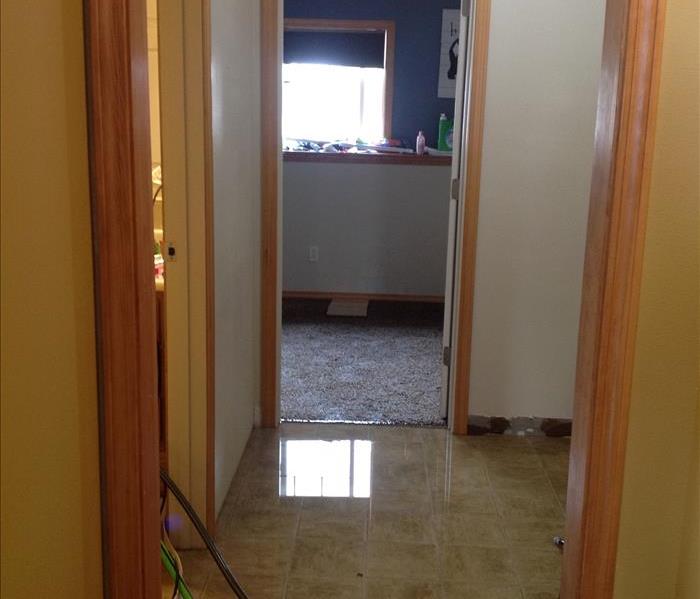 Water damage in Vinnings, GA
Water damage in Vinnings, GA
When water overruns the interior of your home, you are likely to have many questions. Your first impulse might be to try and fix things on your own, but any significant flood event requires professional help. You might wonder, "Who should I call?" For major plumbing problems, a plumbing contractor can come to your home and repair the problem. For help with the cleanup and restoration, a local water mitigation company in Vinings, GA, will have the resources and the personnel to minimize property damage. Technicians will arrive at your home in a matter of hours. They will use advanced equipment and hard-earned knowledge to restore your home to its proper condition.
The Question of Insurance Coverage
Water damage in your home inevitably becomes a financial issue. You will need to repair and replace items and there will be expenses for restoration services. To get the best information, it is vital that you call your insurance agent. In general, though, so long as the water mishap was unexpected and sudden, your homeowner's policy will cover some or all of the following expenses:
- Damage to the structure of your home
- Damage to personal items
- Costs to fix broken pipe
- Costs for restoration services
A flood that originates from the outside of your home is typically not covered. For this you need specific coverage for the overflowing of water into your house.
The Question of a Complete Restoration
How do you determine when your home has been completely restored after water damage? You should make sure all standing water has been removed from impacted areas. It is important to ensure the area has been dried out properly. This can be difficult to determine, so be sure to ask the company doing your cleanup. A reputable franchise will give you an honest answer. Also, pay attention to any lingering odors and insist those are addressed.
A flood in your home is a troubling event. You can overcome this temporary problem with quality help from professionals.
Bursting Pipes Are Terrible for Homes
11/23/2020 (Permalink)
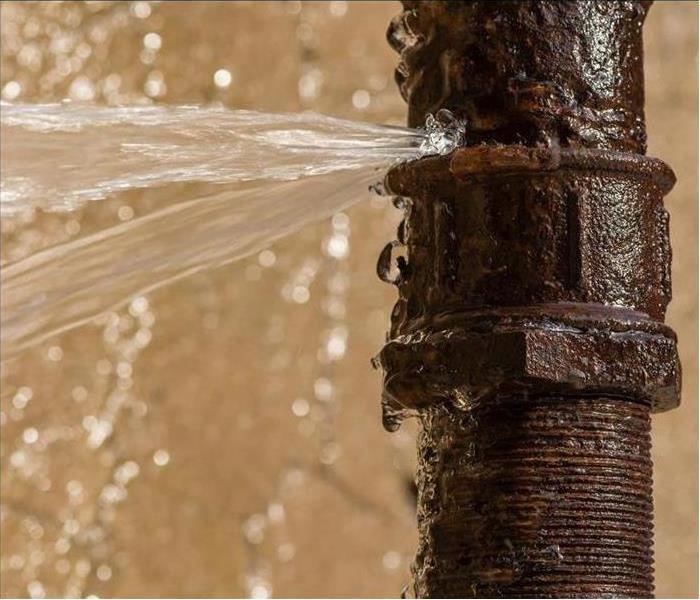 Bursting pipes are terrible homes
Bursting pipes are terrible homes
Bursting Pipes Are Terrible for Homes
Modern construction techniques do an amazing job of keeping the elements outside of your home and the inside cozy, warm and dry. A building envelope is designed to prevent water damage and last for a good number of years.
Unfortunately, bursting pipes bypass the envelope and usually leaves a disaster in their wake. If it happens to you, here’s what to do right away and the best way to deal with the resulting damage.
Your First Step
If you have a pipe break, there are a few immediate actions that can save big problems later:
- Turn off the electric.
- Shut off the water.
- Clean up clear flooded water.
Before you shut off your water, turn off your electricity! If the water reaches exposed wiring, it could cause severe wiring damage – or a fire! If you can safely turn it off, do so, but be careful. If you’re not comfortable shutting it off, skip this step.
Your Next Step
Then, shut off the water. Do so wherever it’s quickest; bursting pipes aren’t going to wait for you to make a decision. You can incrementally turn it on later to unaffected areas, if necessary.
Remove any flooded water as long as it hasn’t mixed with sewage. Dry the area quickly with a mop and towels, then set up a fan to facilitate airflow. You want to reduce humidity as much as practical.
Insurance Claims
If a plumbing problem is sudden and accidental, all common homeowner’s insurance policies should pay for the damages. However, if it’s been an ongoing problem – or the result of improper or lacking maintenance – your insurance claim may be denied. It’s your responsibility to take reasonable care of your property.
The Aftermath
Bursting pipes can cause a huge mess. If water has soaked into the walls or worked its way behind them, the damage can be extensive. You need an experienced water damage specialist who can:
- Fix broken pipe
- Locate hidden damage
- Help with insurance claim
They’ll then restore your home to its former condition. SERVPRO makes it “Like it never even happened.”
Timely Bathroom Maintenance Can Prevent Leaks
10/13/2020 (Permalink)
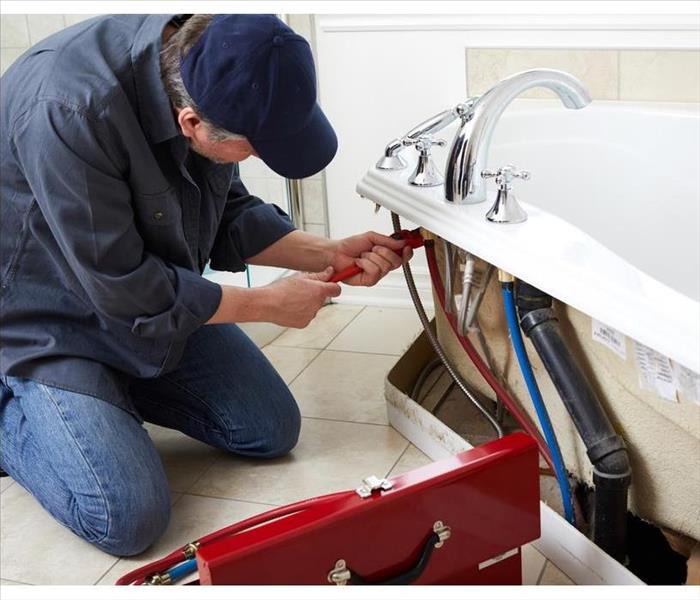 Bathroom maintenance can prevent leaks
Bathroom maintenance can prevent leaks
Timely Bathroom Maintenance Can Prevent Leaks
If you own a home or rent, it's a good idea to become familiar with your plumbing system. This could save you time and money as well as prevent a major problem. The mainline brings freshwater into your building, and from there, you have several supply lines that eventually bring water to individual faucets and appliances, often by way of smaller branch lines. Supply line damage, since it usually carries a large amount of water, can quickly flood your home in Buckhead, GA. Therefore, a smart homeowner pays attention to the condition of the supply lines.
The Need for Maintenance
If you have resided in your location for years, you might even know the history of your supply lines and when they last received maintenance. Knowing the following facts will help you keep tabs on the potential for a supply line leak:
- The age of the pipes
- The material of the pipes
- The date of the last major plumbing upgrade
- The length of any warranty from the plumbing contractor or the pipe manufacturer
Some materials last longer than others. Plastic piping becomes vulnerable to supply line damage after about five to eight years; of course, it could last much longer, but it usually will be not be warrantied for any longer. On the other hand, steel braided piping often has a lifetime warranty on materials.
The Need for Water Cleanup
Whether it is from supply line damage or a bathroom leak, water escaping into your home is a serious problem. A professional water remediation team can act quickly to limit the damage. Trained technicians will arrive Faster to Any Size Disaster and remove standing water before it has had time to cause structural damage to floors and walls. They will use powerful vacuums and air dryers to rid the home of excessive humidity, which is often a condition that invites mold growth. If you suspect your supply lines are worn, it might be time to have a plumbing contractor check things out.




 24/7 Emergency Service
24/7 Emergency Service












